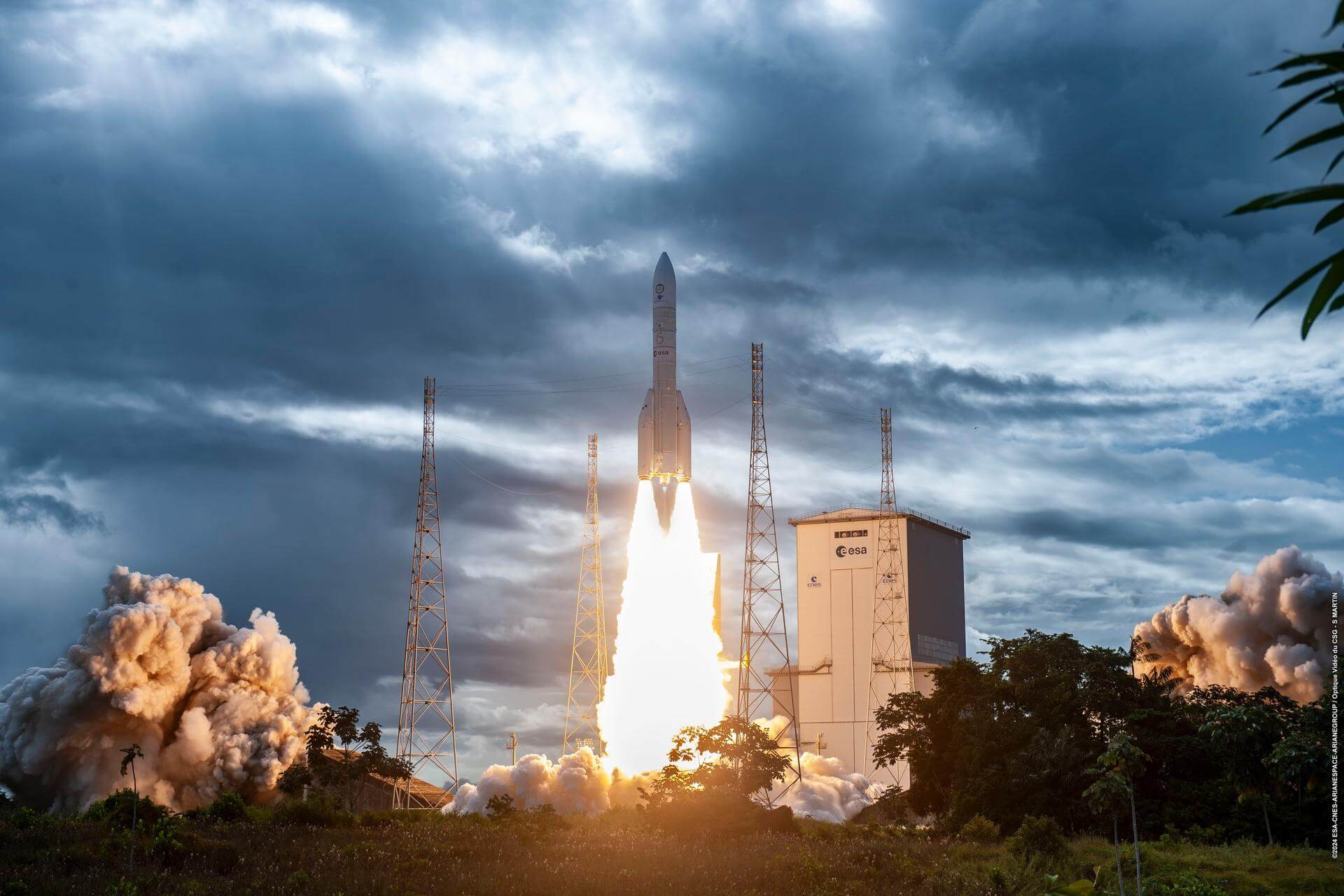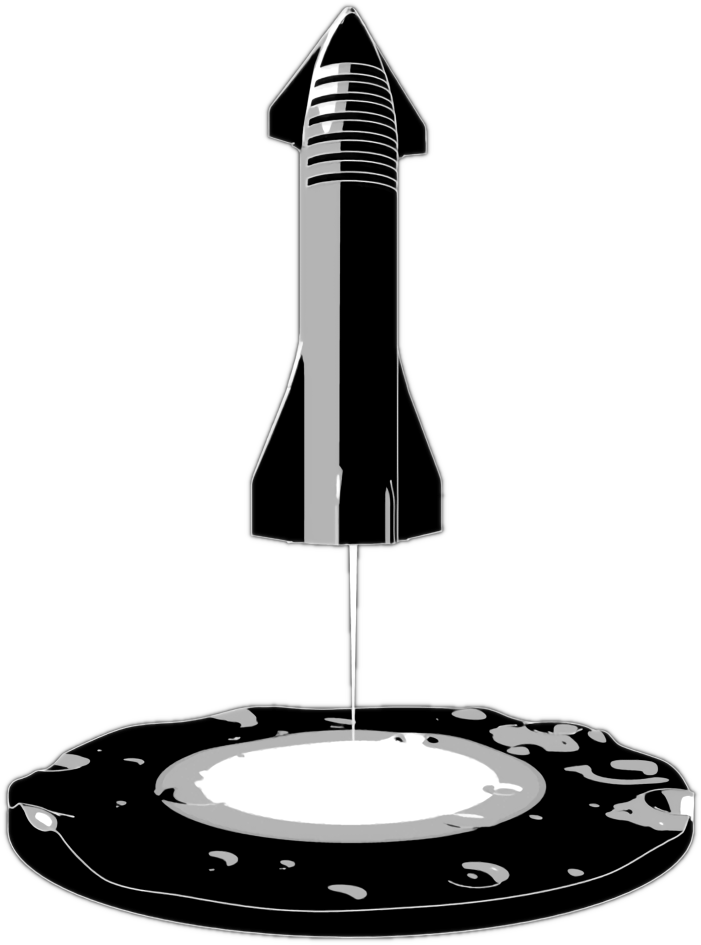· space brief · 4 min read
Space Brief 16 Feb 2025
SpaceX's historic Falcon 9 flight launches 21 Starlink satellites, opening new milestones in space travel. Meanwhile, K2 Space achieves a funding breakthrough, and the first astronaut with a disability is set for a mission to the ISS.

📄Top Stories
SpaceX has set a new milestone with the 26th launch of its Falcon 9 rocket, deploying 21 Starlink satellites from Florida. In other exciting news, K2 Space has secured substantial funding for its high-power satellite platform projects, while astronaut John McFall is set to become the first astronaut with a physical disability to visit the ISS.
📰Detailed Coverage
SpaceX’s Record-Breaking Falcon 9 Launch
SpaceX’s Falcon 9 rocket made history with its 26th launch, successfully deploying 21 Starlink satellites. This mission highlights the rocket’s reusability, underscoring the importance of cost-efficient access to space. The successful landing of the rocket on the droneship, A Shortfall of Gravitas, marks the 98th booster recovery, showcasing SpaceX’s advancements in space technologies.
With each launch, SpaceX continues to expand its Starlink constellation, enhancing global internet coverage. This event underscores the ease of tracking and monitoring such orbiting objects through our web app, which offers users detailed real-time satellite tracking capabilities.
Read the full story: Space.com
First Astronaut with a Disability Cleared for ISS Mission
John McFall, a former Paralympian and surgeon, is set to join a mission to the International Space Station, becoming the first astronaut with a physical disability to do so. The European Space Agency’s announcement of McFall’s acceptance signifies a growing inclusivity within space exploration sectors.
This mission is a significant step forward in demonstrating space access for individuals with disabilities, reflecting broader societal advances. It highlights the ever-expanding diversity of astronauts and could inspire new innovative approaches to spacecraft design and mission planning.
Read the full story: Space Daily
K2 Space Secures $110M for Satellite Platform Expansion
K2 Space has successfully completed a $110 million Series B funding round to enhance its production capabilities for next-generation high-power satellite platforms. Co-led by Lightspeed Venture Partners and Altimeter Capital, this funding will propel K2 Space towards achieving critical space infrastructure advancements.
The innovative satellite platforms by K2 aim to revolutionize space data transmission and collection, providing robust solutions for global connectivity and observational capabilities. This development underscores a pivotal moment in commercial spaceflight, setting the stage for enhanced satellite services.
Read the full story: Space Daily
🛰️Satellite Spotlight
- Satellite Name: ONEWEB-0327
- NORAD ID: 49196
- Launch Date: 2021-09-14
- Mission: The satellite is part of the OneWeb constellation, providing global broadband connectivity services.
- Orbit: 87.9048° inclination, 13.18687267-minute period, 0.0001544 eccentricity
- Operator: ONEWEBN
- Fun Fact: Combining innovative technology with a business-transformational approach, OneWeb aims to bridge digital divides worldwide.
Current TLE Data:
1 49196U 21083L 25047.08912393 .00000060 00000+0 11946-3 0 9995
2 49196 87.9048 72.1614 0001544 95.1067 265.0242 13.18687267167239Track this satellite in real-time on our web app: Track ONEWEB-0327
🚀Upcoming Space Launches
February 18
-
SpaceX Falcon 9:
- Starlink Group 10-12 from Cape Canaveral Space Force Station (23:00 UTC) A batch of 23 satellites for the Starlink mega-constellation, featuring a Falcon 9 booster landing within The Bahamas waters.
-
Rocket Lab Electron:
- Fasten Your Space Belts (BlackSky Gen-3 1) from Rocket Lab Launch Complex 1, Mahia Peninsula, New Zealand (23:15 UTC) The first mission to deploy BlackSky’s next-generation Gen-3 satellites for high-resolution imagery.
February 20
- SpaceX Falcon 9:
- Starlink Group 15-1 from Vandenberg Space Force Base (00:01 UTC) A batch of satellites for the Starlink mega-constellation, a project for space-based Internet communication.
February 21
- SpaceX Falcon 9:
- Starlink Group 12-14 from Cape Canaveral Space Force Station (11:31 UTC) Continues the deployment of satellites for the Starlink mega-constellation.
February 26
- Arianespace Ariane 62:
- CSO-3 from Guiana Space Centre, French Guiana (16:24 UTC) The third high-resolution optical imaging satellite for the French military, replacing the Helios 2 series.
February 27
-
SpaceX Falcon 9:
- Nova-C IM-2 & Lunar Trailblazer from Kennedy Space Center (00:17 UTC) Features NASA’s PRIME-1, the first demonstration of in-situ resource utilization on the Moon.
-
Soyuz 2.1a:
- Progress MS-30 (91P) from Baikonur Cosmodrome, Republic of Kazakhstan (21:24 UTC) A resupply mission to the International Space Station.
February 28
-
SpaceX Falcon 9:
- NROL-57 from Vandenberg Space Force Base (00:00 UTC) An eighth batch of reconnaissance satellites for the National Reconnaissance Office.
-
SpaceX Falcon 9:
- SPHEREx & PUNCH from Vandenberg Space Force Base (03:10 UTC) SPHEREx will survey the sky in near-infrared light, and PUNCH will focus on the Sun’s outer atmosphere and coronal mass ejections.
March 3
- SpaceX Falcon 9:
- Transporter 13 (Dedicated SSO Rideshare) from Cape Canaveral Space Force Station (00:00 UTC) A dedicated rideshare flight with numerous small satellites for commercial and government entities.
Note: Launch dates and times are subject to change due to technical or weather considerations.

Maurice Stellarski



